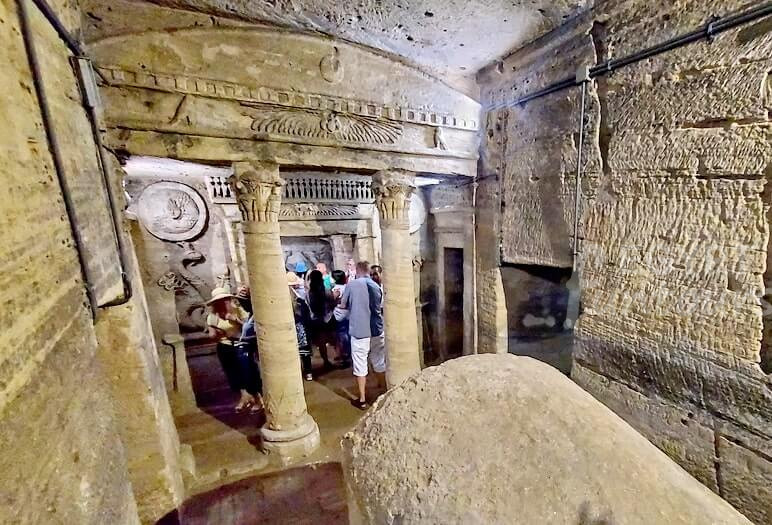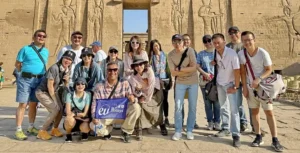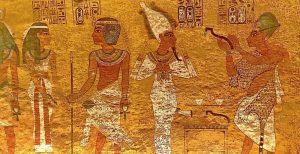In 1900, a donkey pulling a cart in Alexandria suddenly vanished, swallowed by the earth. When its owner went to investigate, he peered into a dark hole in the ground… and discovered one of the most bizarre and fascinating wonders of the ancient world.
Welcome to the Catacombs of Kom Esh-Shokafa, a 2nd-century AD Roman necropolis that is, without a doubt, the most unique and important archaeological site in Alexandria.
This is not a pharaonic tomb. It is a multi-level, subterranean “city of the dead” that was carved deep into the bedrock. But its true magic is its art. This is the single best place in the world to see the weird, wonderful, and unique fusion of three great cultures: Ancient Egyptian, Greek, and Roman, all blended together.






























